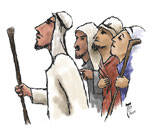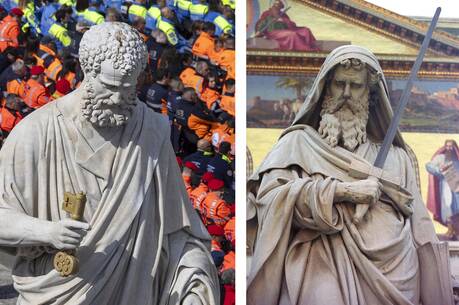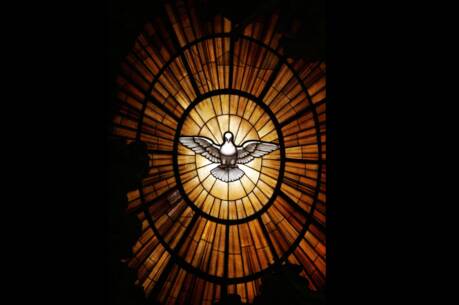Decrease and Increase
We usually associate John the Baptist with the Advent season. But here in early summer we encounter John once more, in order to celebrate his birth on June 24. So important is this solemnity that today it replaces the Twelfth Sunday in Ordinary Time.
The New Testament does not supply precise information about the dates of John’s or Jesus’ birth. In the third or fourth century the birthday of Jesus was assigned to Dec. 25, around the time of the winter solstice, after what we call the “shortest” day of the year, when the time of daylight begins to increase.
In John’s Gospel there is a saying from John the Baptist, referring to Jesus, that “He must increase; I must decrease” (3:30). And so the birth of John was assigned to June 24, after the summer solstice, when the daylight begins to decrease, following the “longest” day of the year. The Scripture readings for the Nativity of St. John the Baptist reflect the dynamic of “decrease and increase” between John and Jesus.
Today’s Old Testament reading is one of the “servant” songs from Second Isaiah. It was chosen most obviously for its reference to the servant having been named from his mother’s womb (see Luke 1:60). But the passage also expresses important aspects of John’s career as a prophet to God’s people and a light to the nations. At the same time his status as servant makes him subordinate to Jesus.
The selection from Paul’s speech in Acts 13 reminds us that John played a pivotal role in salvation history and so won a place in the early Christian kerygma (proclamation). Yet here again importance is given to John’s own recognition of his subordinate status with respect to Jesus: “I am not worthy to unfasten the sandals of his feet.”
In Luke’s infancy narrative there are many parallels and comparisons between John and Jesus, both in the announcements of their births and in the accounts of them. The dynamic is simple: While John is great, Jesus is even greater. The idea is not to criticize John but rather to highlight Jesus’ greatness. The birth of John is presented by Luke as the fulfillment of God’s promises not only to his elderly parents but also to God’s people as a whole. Elizabeth and Zechariah insist that the child be named John, a name whose Hebrew form (Yohanan) celebrates God’s mercy and favor to his people. If there is any connection between Jesus and the Dead Sea Scrolls, it was through John, who was “in the [Judean] desert until the day of his manifestation to Israel.” The child John grew up to become a herald of God’s coming kingdom, the precursor of the Messiah and the mentor of Jesus.
The dynamic of “decrease and increase” can be applied to all Christians. The vocation of every Christian is to let the light of Jesus shine forth to all the world and bear witness to the Word who became flesh and dwelt among us.
This article also appeared in print, under the headline “Decrease and Increase,” in the June 18, 2007, issue.








